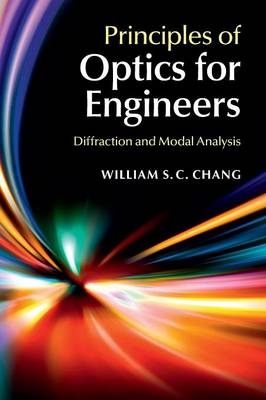
Principles of Optics for Engineers
Cambridge University Press (Verlag)
978-1-107-07490-3 (ISBN)
Uniting classical and modern photonics approaches by presenting optical analyses as solutions of Maxwell's equations, this unique book enables students and practising engineers to fully understand the similarities and differences between the different methods. The book begins with a thorough discussion of plane wave analysis, which provides a clear understanding of optics without considering boundary condition or device configuration. It then goes on to cover diffraction analysis of many applications, including a rigorous analysis of TEM waves using Maxwell's equations with boundaries. Laser cavity modes and Gaussian beams are presented, modal analysis is covered, and approximation methods are discussed (including the perturbation technique, coupled mode analysis, and super mode analysis). With theory linked to practical examples throughout, it provides a clear understanding of the interplay between plane wave, diffraction and modal analysis, and how the different techniques can be applied to various areas including imaging, signal processing, and optoelectronic devices.
William S. C. Chang is an Emeritus Professor of the Department of Electrical and Computer Engineering, University of California, San Diego (UCSD). After receiving his PhD from Brown University in 1957, he also taught at Stanford University, the Ohio State University and Washington University, St Louis. He pioneered maser and laser research at Stanford, and he has been involved in guided-wave research at Washington University and UCSD since 1971. He has published over 200 technical papers and several books, including Fundamentals of Guided-Wave Optoelectronic Devices (Cambridge University Press, 2009), Principles of Lasers and Optics (Cambridge University Press, 2005) and RF Photonic Technology in Optical Fiber Links (Cambridge University Press, 2002).
Introduction; 1. Optical plane waves in unbounded medium; 2. Superposition of plane waves and applications; 3. Scalar wave equation and diffraction of optical radiation; 4. Optical resonators and Gaussian beams; 5. Optical waveguides and fibers; 6. Guided wave interactions; 7. Passive guided wave devices; 8. Active optoelectronic guided wave components; Appendix.
| Erscheint lt. Verlag | 28.5.2015 |
|---|---|
| Zusatzinfo | 1 Tables, black and white; 61 Line drawings, unspecified |
| Verlagsort | Cambridge |
| Sprache | englisch |
| Maße | 185 x 236 mm |
| Gewicht | 640 g |
| Themenwelt | Technik ► Elektrotechnik / Energietechnik |
| ISBN-10 | 1-107-07490-8 / 1107074908 |
| ISBN-13 | 978-1-107-07490-3 / 9781107074903 |
| Zustand | Neuware |
| Haben Sie eine Frage zum Produkt? |
aus dem Bereich


